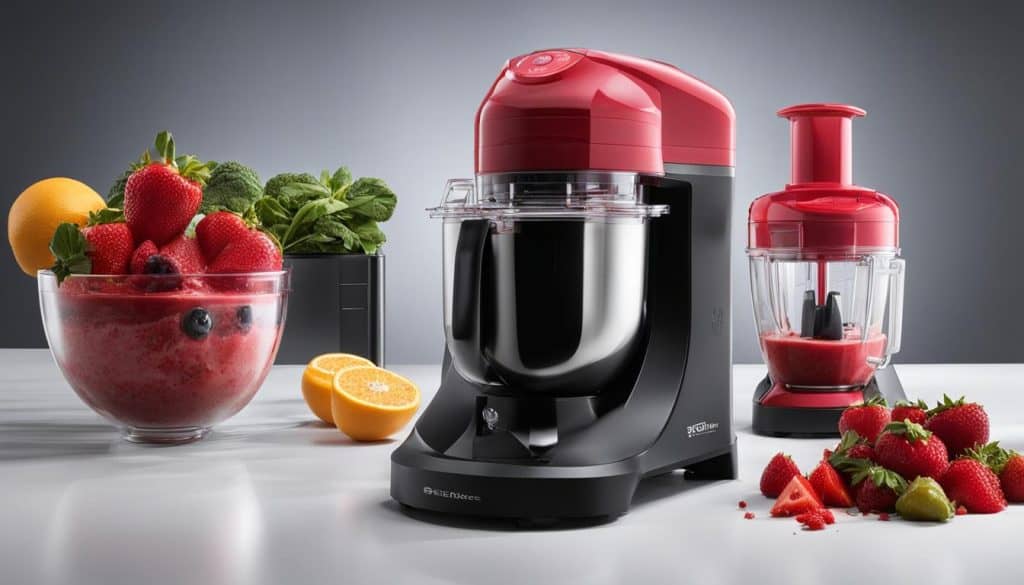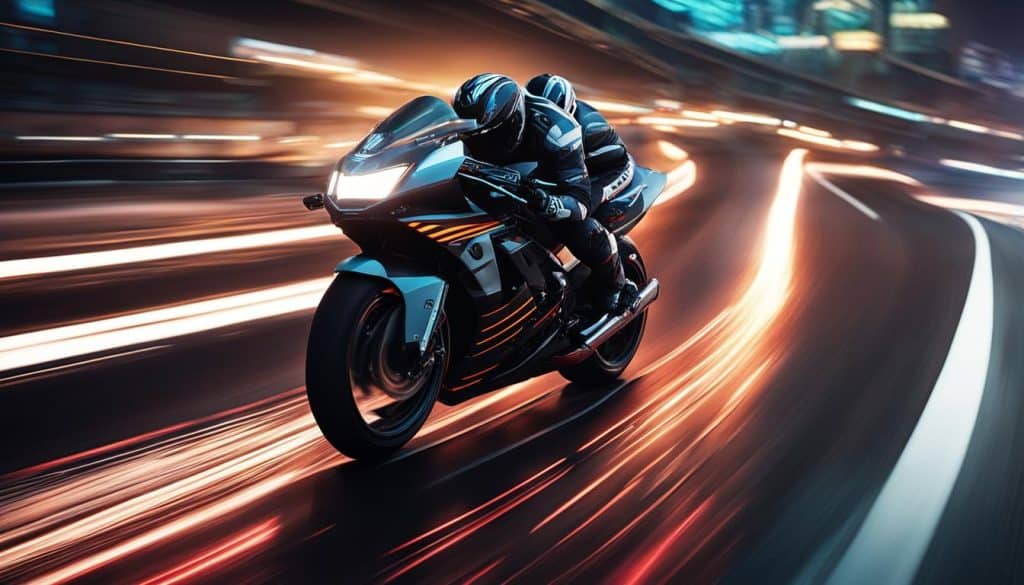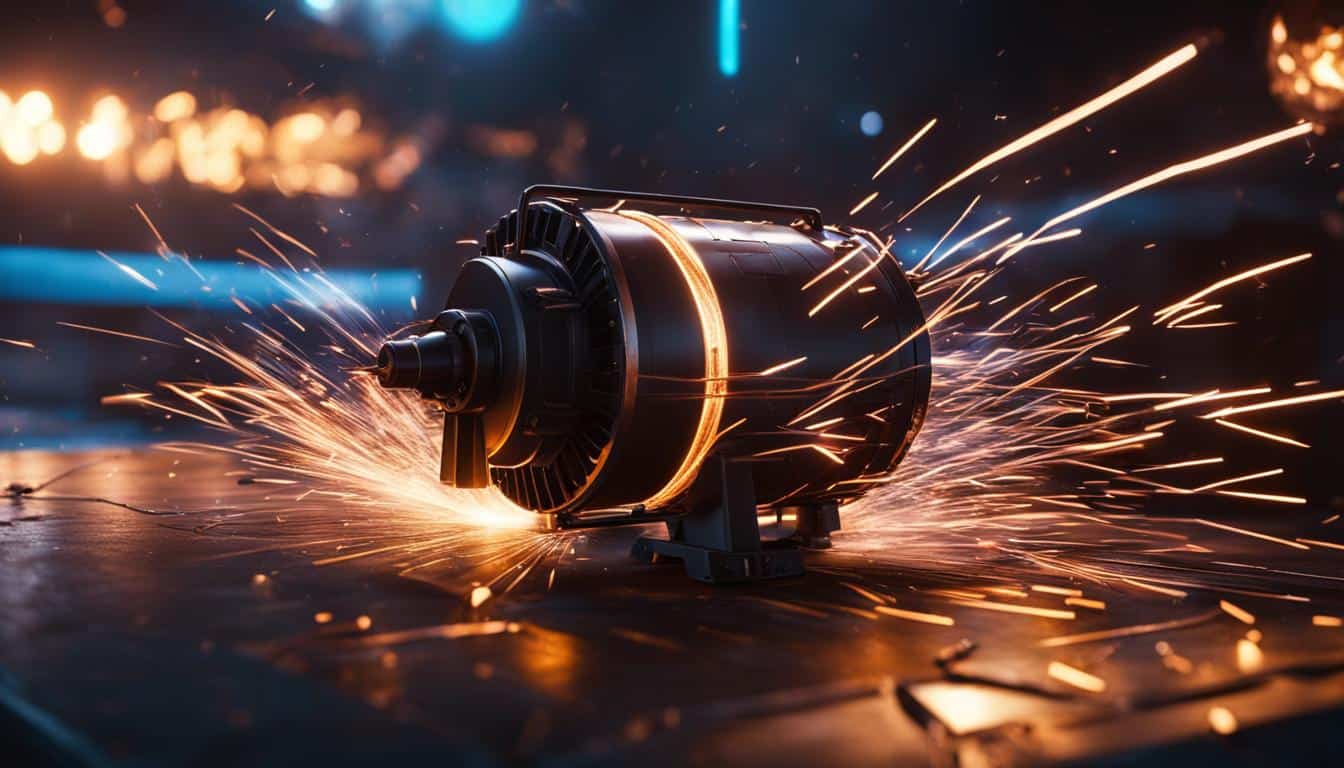Blender motor power — a critical factor that determines the performance and efficiency of your blending machine, helps to prepare delicious culinary creations. When selecting a blender, wattage and features are essential considerations.
In this article, we will help you understand the ins and outs of blending motor power and get you closer to that perfect choice. Trust us; it is not rocket science.
1. Watts ≠ Everything
So you’re in the market for a blender and have been bombarded with the idea that higher wattage means more power. While it’s true that wattage is an important factor in determining a blender’s blending performance, it’s not the only factor to consider.
Other factors include blade design and jar configuration, which can greatly impact your blending experience.
For example, a blender with a well-designed blade can provide better blending performance than a blender with a higher wattage but poorly designed blades. Similarly, the shape and material of the blending jar can affect the final result of your blending efforts.
Ultimately, it’s essential to look beyond wattage and examine all the features to decide which blender is right for you. Don’t make wattage the sole deciding factor, instead, consider blade design, jar configuration and other features to have the best blending experience possible.
Blade Design
The blade design is a crucial factor that affects a blender’s blending performance. A well-designed blade can provide better results than a poorly designed blade, even if the poorly designed blade is attached to a high-wattage motor.
For example, some blades are designed to create a vortex in the jar that pulls the ingredients down towards the blades, improving blending efficiency and reducing the need for manual scraping and stirring. Other blades may have multiple prongs or serrated edges to help break down solid ingredients.
Jar Configuration
While blade design is important, the shape and material of the blending jar can also impact blending performance. A jar made of glass may be heavier but can provide better clarity, while a plastic jar may be lighter and more durable.
Similarly, the shape of the jar can impact blending performance. Taller jars may be better for creating smoothies, while wider jars can handle larger ingredients like fruits and vegetables.
Tip: Consider what types of recipes you plan to make with your blender and choose a blade design and jar configuration that best suits your needs.
2. Matching Power to Purpose
When it comes to blender motor power, finding a blender that fits your specific needs is crucial. Blenders with 200-500w are great for basic tasks such as mixing and chopping, making them ideal for individuals who don’t need a lot of power.
On the other hand, 700-1000w blenders can handle smoothies and dips with ease, making them a popular choice for those who frequently make drinks or dips.
If you are looking for a true powerhouse blender, look no further than 1500w+ models. These monsters can handle anything you t ow at them, from dense fruits to ice cubes.
To help you decide which power level is right for you, consider what basic tasks you’ll be using the blender for.
If you mainly use it for simple mixing and chopping tasks, a lower wattage blender may suffice. For those who love making smoothies or dips, a higher wattage blender may be more suitable.
It’s worth noting that not all basic tasks require a low-wattage blender. For instance, if you plan to crush ice cubes or blend tougher ingredients, you’ll need a blender with more power.
Keep in mind that higher wattage blenders tend to be more expensive. Therefore, it’s important to balance your needs with your budget when selecting a blender.

3. Pulse Power Boosts
If you need extra power for challenging tasks like ice crushing or tackling tough ingredients, blenders with a “pulse” function are ideal. The pulse function delivers short bursts of intense power that can blend t ough anything without burning out the motor.
This feature is especially useful when you don’t want to continuously blend ingredients, but rather want to pulse them gently to control the blend consistency.
With the pulse function, you can work with a variety of textures and blend effectively without overheating your blender. It’s a small added feature that can make a big difference in your blending experience.
Take note that while the pulse function can help prevent motor burnout, it’s still important to follow the manufacturer’s instructions and avoid overloading the blender with too many ingredients.
4. Sound and Fury
Preparing a delicious and healthy smoothie can be quite fulfilling. Nevertheless, blending can sometimes produce unwanted noise, especially if you have a high-wattage blender.
If you have noise concerns, you can consider models with sound suppression features. Investing in a pair of good earplugs can also help you enjoy your smoothie without disrupting the household or your neighbors.
To minimize any disturbance, you can also move the blender to a more enclosed area or enjoy your smoothies during the day, especially if living in an apartment where noise can be an issue.
Make sure your blender’s noise level is within your comfort level, and do not hesitate to explore alternative models if you find the noise unbearable.

Noise Reduction Tips
Here are some noise reduction tips to consider:
| Noise Reduction Tips | Description |
|---|---|
| Sound-Shield Cover | You can cover the blender with a sound-shield cover or a towel to reduce noise. You can also use a blender mat to decrease vibrations that cause noise. |
| Soundproof Your Kitchen | You can soundproof your kitchen by using materials like acoustic tiles or a soundproof curtain. They can reduce noise by absorbing sound waves and limiting their reflection. |
| Blend During Daytime | If you live in an apartment or have sensitive neighbors, you can blend during the daytime or early evening hours to reduce noise disturbance. |
| Location Matters | Choose the most remote area in your home for blending, away from bedrooms or living areas. |
Noise is a valid concern when using high-wattage blenders. Sound suppression features, earplugs, and noise reduction tips can help minimize the resulting sounds. Make sure to choose a blender that suits your blending needs and noise tolerance.
5. Speed Demons
Blenders with variable speed settings provide flexibility for different tasks. Lower speeds are ideal for mixing delicate sauces, while higher speeds are perfect for pulverizing fruits and veggies. Some blenders even have pre-programmed settings for specific tasks like smoothie making or ice crushing.
To give you a better idea of how different speeds impact blending results, take a look at the following table:

| Blender Model | Low Speed (rpm) | High Speed (rpm) | Pre-Programmed Settings |
|---|---|---|---|
| Vitamix A2500 | 500 | 37,000 | Smoothies, Hot Soups, Frozen Desserts |
| Ninja BL770 | 3,000 | 24,000 | Smoothies, Puree, Ice cream, Pulse |
| Breville BBL620 | 1,000 | 18,000 | Puree, Soup, Pulse, Frozen Cocktails |
As this table shows, blenders with variable speed settings, such as the Vitamix A2500 and Ninja BL770, offer a range of options for different tasks. Whether you’re making smoothies, purees, or frozen desserts, you can adjust the speed based on the desired outcome.
6. Overload Protection
When it comes to blenders, safety is crucial. Overloading your blender can cause motor overheating and potential burnout. Luckily, many blenders come with a built-in safety feature: automatic shut-off when overloaded.
This feature ensures your blender won’t continue running once it reaches its limit, providing peace of mind and longevity for your appliance.
Look for blenders that offer this safety feature, especially for higher wattage models. An automatic shut-off can ultimately save you money on repairs or replacement parts down the line.
In addition to automatic shut-off, keep in mind that repeatedly overheating and overloading your blender can cause wear and tear over time. Be mindful of the load you’re placing on your blender, and avoid pushing it beyond its limits.

“Having a blender with overload protection is essential to prevent motor overheating and extend the life of your appliance. Investing in a model with automatic shut-off when overloaded can provide added safety and peace of mind.”
7. Energy Efficiency Matters
When you’re running a busy kitchen or blending up a storm, a powerful blender that can get the job done quickly is usually the go-to choice. However, it’s important to remember that powerful blenders also consume more energy.
If you’re conscious about your energy consumption, you might want to consider opting for a lower wattage blender model instead.
These blenders are designed to be energy-saving, which means that they consume less power while still delivering excellent blending results. Not only can you save on your electricity bills, but you can reduce your carbon footprint too.
Lower wattage, energy-saving blenders are a great choice if you’re conscious about your energy consumption.
8. Commercial vs. Home Use
Blenders are an essential kitchen tool for many households. When deciding which blender to buy, you need to determine the intended purpose. If you’re looking for a powerful blender to handle heavy-duty tasks and frequent use, commercial blenders are the way to go.
These blenders are designed for high wattage and durability, making them perfect for crushing ice, blending tough ingredients, and handling extended use.
However, commercial blenders come with a steeper price tag due to their advanced features, making them less budget-friendly for home use.
If you only plan to use the blender for everyday tasks like mixing and chopping, home blenders offer good performance at a more budget-friendly price point. These blenders come in various wattages and sizes, making them fit for different purposes.
When deciding between a commercial and home blender, consider factors such as price, frequency of use, and intended tasks. Don’t overspend on a blender when a budget-friendly alternative can still get the job done.
On the other hand, investing in a commercial blender can be worthwhile if you frequently tackle heavy-duty tasks that require a higher wattage and durability.
9. Maintenance Matters
Higher wattage blenders are powerful beasts that demand maintenance. The wear and tear on the blender blades, jars, and motor are likely to be more extensive than on lower wattage models. Taking care of a blender should be at the forefront of your mind when selecting a blender.
To simplify the cleaning process, go for a blender model with easily disassembled parts. Some high-end blenders are self-cleaning but come with an equally high price tag. However, you can achieve the same intensive cleaning at a fraction of the cost by using dishwashing liquid and hot water.
To prevent any damage during cleaning, ensure the blender is switched off and unplugged from the electrical socket.
If your blender is showing signs of extensive wear and tear or is not blending like it used to, it may be time to take it for maintenance or replace it with a newer model.
Blender Maintenance Tips
- Regularly clean your blender to avoid any buildup of bacteria or food residue.
- Use a dishwashing liquid and hot water solution to clean the blender thoroughly.
- Do not submerge the entire blender in water; instead, only wash the jar, lids, and blades separately.
- When washing the blades, use a sponge or brush to remove any debris or buildup.
- Do not use abrasive cleaning materials that may scratch the blender jar or blades.
- Check the blender motor and electrical cord regularly for any signs of wear and tear.
- If you notice any issues, stop using the blender and get it inspected or repaired if needed.
10. Brand and Warranty
When selecting a blender, it’s important to consider reputable brands that offer reliable motors and longer warranties. This not only ensures peace of mind but also provides potential after-sales support. Some of the most reputable brands in the market include Vitamix, Blendtec, and KitchenAid.
These brands offer powerful and durable blenders that are designed to withstand daily use. With longer warranties, you can enjoy a blender that lasts for years without worrying about any unexpected breakdowns. Additionally, these brands also offer excellent after-sales support, providing a solution to any technical issue that may arise.
Remember that investing in a quality blender from a reputable brand may be a bit pricier, but it’s worth it in the long run.
Conclusion
Congratulations on reaching the end of our guide on blender motor power! By now, you should have a better understanding of how wattage, features, and other factors impact a blender’s performance and suitability for your culinary needs.
Remember, don’t solely rely on wattage as the deciding factor. Consider blade design, jar configuration, and other features that impact blending performance.
Matching power to purpose is key. If you need a blender for basic tasks, look for models with 200-500 watts. For smoothies and dips, opt for 700-1000w blenders. And, if you need a powerhouse blender, look for 1500w+ models.
Other important factors to consider include overload protection, energy efficiency, and maintenance requirements. Higher wattage blenders may require more intensive cleaning, so choose a model with easily disassembled parts.
Lastly, consider reputable brands with reliable motors and longer warranties for added peace of mind and after-sales support.
We hope this guide has been helpful in assisting you in selecting the perfect blender for your culinary creations. Happy blending!


